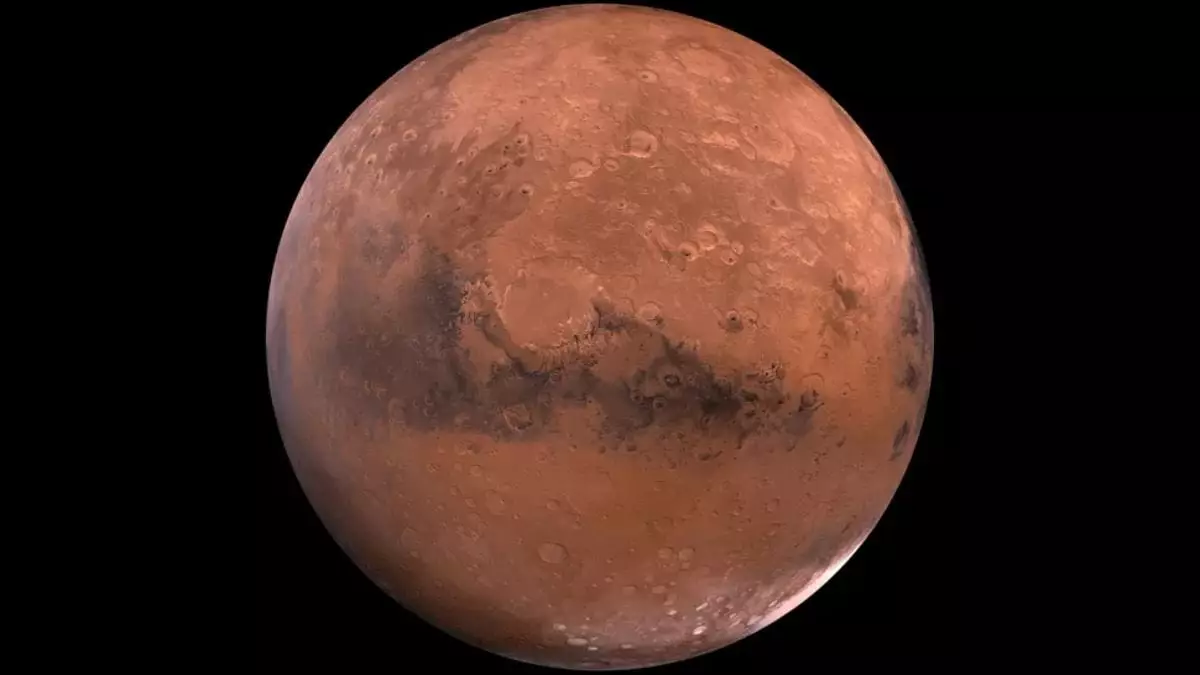Mars has long been the subject of fascination and speculation, an eternal source of wonder for scientists and laypersons alike. Initially considered a cold, barren wasteland, the Red Planet is now suspected of having once showcased conditions strikingly similar to our own Blue Planet. For over four years, NASA’s Perseverance rover has diligently traversed a Martian landscape, revealing hints of what may have been—a vibrant expanse shaped by flowing rivers and vast lakes. In the eyes of many researchers, including geologists from the University of Colorado, the evidence suggests ancient Mars was not the frozen desolation we’ve come to expect, but rather a warm and inviting world, pregnant with possibility.
This transformation in perception could significantly redefine our understanding of the solar system’s history and the potential for life beyond Earth. The implications are profound: if Mars had conditions conducive to life, what does that mean for our ongoing search for extraterrestrial organisms? How can we reconcile the historical environment of Mars with the current chilling reality of an inhospitable landscape? As the narrative of Mars evolves, we are compelled to reconcile these dualities—between what was once thought possible and what is presently observed.
The Case for Liquid Water on Mars
The recent findings published in the *Journal of Geophysical Research: Planets* put this dual nature into sharp focus. For decades, the prevailing view was that Mars had primarily icy conditions, driven by a harsh climate model that offered little room for argument. However, the new research offers compelling evidence to the contrary, positing a climate filled with liquid water—potentially even rainfall and snowfall—shaping the Martian terrain. The scientists employed sophisticated computer models that indicated an active hydrological cycle, rather than one merely derived from the melting of ice caps.
Amanda Steckel and her colleagues have illuminated a path forward in our understanding of Martian topography. Their simulations suggest that water might have shaped the planet’s surface far more dynamically than ice alone could account for—an intriguing argument that opens the door to further inquiry. Yet, despite such groundbreaking assertions, an uncomfortable truth lingers—how did this series of geological marvels form if the planet’s climate should preclude liquid water?
Challenging the Established Narrative
The question of Mars’ wet history is not merely academic; it hurls us into the heart of a long-standing cosmic debate. Why should it be that one planet, astronomically close to another—Earth—could bloom into a cradle of life while its twin succumbs to desolation? Addressing this takes us beyond analysis and into the realm of philosophy—challenging our notions of what constitutes a habitable environment.
The study conducted by Steckel’s team holds pivotal significance because it prompts a re-examination of ingrained preconceptions regarding planetary climate. If ancient Mars harbored enough warmth to sustain lakes and rivers, what might that suggest about Earth’s early atmosphere and geology? Are we truly alone in the universe, or are we merely scratching the surface of a complex narrative that applies not only to Mars but to countless celestial bodies vying for a chance to tell their story?
We find ourselves in the midst of a transformative period in planetary science, one that requires bold thinking and open-minded inquiry. The potential to find parallels between Mars’ past and Earth’s early existence feeds an insatiable curiosity about our cosmic neighborhood and encourages us to reshape the discourse surrounding planetary formation and evolution.
The Road Ahead
As our understanding of Mars continues to grow deeper, we face the challenge of how to absorb these revelations into our worldview. The interplay between hypothesis and evidence shapes the very foundation of scientific inquiry, and the path laid out before us demands rigorous exploration. With newer technologies and missions continually deploying to investigate this enigmatic planet, the coming years hold promise.
However, we must remain vigilant in our skepticism. The questions of how the planet could have maintained warmth for the liquid water to exist, or how it transitioned to our current perception of an arid Mars, should push us to explore the intricacies of planetary climates more comprehensively. The journey to uncover the secrets of our enigmatic neighbor remains fraught with uncertainty, but it is this very uncertainty that fuels innovation, pushing the boundaries of what we can discover and understand about the universe we inhabit.

